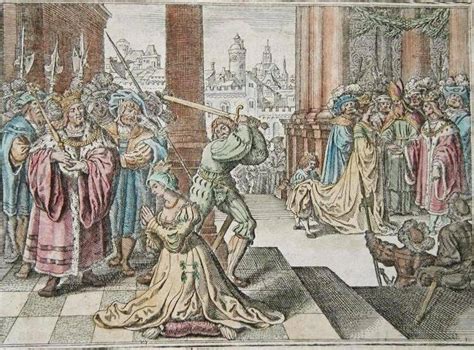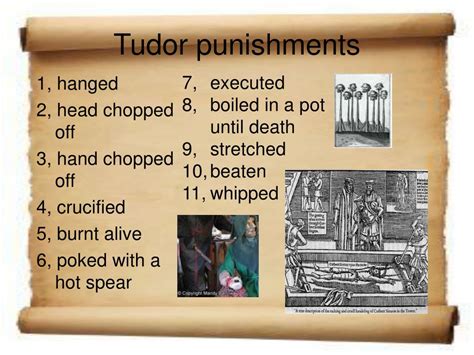tudor portrait beheaded | why did henry execute anne tudor portrait beheaded In addition to painting Henry VIII himself, Holbein created portraits of merchants, ambassadors, noblewomen, children and the hordes of ambitious patrons who cycled in and .
Atualmente no servidor Origem os níveis 40 e 90 não precisam ser destravados; Não existe chance de falha no destrave do nível 40; Caso a ordem das runas esteja correta, há 95% de chance de sucesso na composição da Pedra da Fúria , em caso de sucesso serão consumidos 2 milhões de gold;
0 · why did henry execute anne
1 · what were tudor punishments
2 · the tudors execution scenes
3 · the tudors anne boleyn execution
4 · pressed to death tudor
5 · people executed by the tudors
6 · horrible histories tudor punishment
7 · anne boleyn execution scene
LOCAL NUMBER. This is the local number you would like to call. This page helps you call from to Latvia using international country codes. Area Codes for Latvia are also supplied. Country Code 371 is for Latvia.
Inarguably Britain's most famous male monarch, the silhouette of Henry VIII alone is instantly recognisable, from the celebrated portrait by Hans Holbein the Younger. Tudor England was far more violent than modern society, with gruesome forms of execution—like beheading, burning at the stake, and being hung, drawn and .Mary I (18 February 1516 – 17 November 1558), also known as Mary Tudor, and as "Bloody Mary" by her Protestant opponents, was Queen of England and Ireland from July 1553 and Queen of Spain and the Habsburg dominions as the wife of King Philip II from January 1556 until her death in 1558. She is best known for her vigorous attempt to reverse the English Reformation, which had begun during t. In recent years, scholars and academics have tried to reassess Mary's reputation and her reign as a whole. Was it really such a failure, as so many seem to claim? Certainly, .
why did henry execute anne
what were tudor punishments
Mary Tudor. Portrait of Mary I of England by Hans Eworth, 1555-1558. You may know her as Mary I or “Bloody Mary,” the English queen who beheaded Lady Jane Grey, . In addition to painting Henry VIII himself, Holbein created portraits of merchants, ambassadors, noblewomen, children and the hordes of ambitious patrons who cycled in and .Thomas Culpeper. On December 10, 1541, Thomas Culpeper was executed. He was beheaded for treason against King Henry VIII, and his head displayed at London Bridge. Thomas .
However, news arrived that her beheading had been postponed to the following day and she was returned to her chambers for another night of torment. The next morning, dressed in grey damask trimmed with ermine, she .
Portraits, both full-length and miniature, were exchanged to cement diplomatic ties and advance dynastic marriage proposals. Jeweled clothing and books were marks of royal favor. Subscribe and click the bell icon to get more arts content every week:https://tinyurl.com/yc3m7n4mBritish art historian Waldemar Januszczak shows that Hans H.On the 12th February 1554, a girl of just seventeen was led from her rooms in the tower of London to the place of execution within its walls. Her beheading marked the end of a tumultuous six months which had seen her proclaimed queen, .
cintura louis vuitton dettagli
the tudors execution scenes

cintura louis vuitton fake uomo
Divorced, beheaded, survived.'" More like this: . Gallery in London titled Six Lives, featuring modern photographic interpretations of the women as well as their Tudor portraits. . And so, on 12th October 1554, Lady Jane Grey was beheaded at the Tower of London. This famous nineteenth-century reimagining of her execution is highly emotive and cemented the event in the collective popular imagination. . Imaginary Portrait of Mary I (1516–1558) (Mary Tudor) c.1800. British (English) School. Mary I (1516–1558), Queen of . Tudor England was far more violent than modern society, with gruesome forms of execution—like beheading, burning at the stake, and being hung, drawn and quartered—carried out in full view of . Such a death was an undoubtedly horrific sentence. But in Tudor England, bloody punishments were the norm, with execution methods ranging from beheading to boiling to being hanged, drawn and .
In popular culture, Tudor noblewoman Jane Boleyn is often portrayed as a petty, jealous schemer who played a pivotal role in the downfall of Anne Boleyn, the second of Henry VIII’s six wives .
In the UK, it’s one of the first chapters of history that we learn as children, summed up in the macabre, sing-song rhyme about Henry’s six wives: divorced, beheaded, died, divorced, beheaded . This is a morbid question, I know. Why were the heads of some beheaded traitors sewn back on their bodies after death? I am reading Alison Weir's biography of Queen Isabella, and it mentions that after King Edward's favorite, Piers Gaveston, was beheaded, his head was crudely sewn back on. . In the Tudor period, most heads of executed .Catherine Howard [b] (c. 1523 – 13 February 1542) was Queen of England from July 1540 until November 1541 as the fifth wife of King Henry VIII.She was the daughter of Lord Edmund Howard and Joyce Culpeper, a cousin to Anne Boleyn (the second wife of Henry VIII), and the niece of Thomas Howard, 3rd Duke of Norfolk.Thomas Howard was a prominent politician at Henry's .
Elizabeth's return to court. After Henry VIII’s final marriage to Katherine Parr in 1543, the King, conscious of his failing health and encouraged by Katherine, sought a more permanent reconciliation with his daughters Elizabeth and Mary.. Both were included once again in the line of succession. The young woman with her father’s red hair and (for those who dared to . Divorced, Beheaded, Died, Divorced, Beheaded, Survived. uncover the women behind the rhyme at the National Portrait Gallery's Six Lives exhibition. After 500 years of living in the shadow of their husband, condemned to being part of a simplistic rhyme and neatly categorised by the collective, "Henry VIII's wives", it's time for the six women who were . But a more revealing image hangs in the room dedicated to Catherine Howard. This portrait, an early 17th-century copy of an original from c. 1542, represents the king in costume comparable to an Ottoman dolman, a kaftan-like garment seen in portraits of the Ottoman emperors. The choice no doubt relates to Henry’s well-recorded fascination .
the tudors anne boleyn execution
The year is 1549, and Thomas Seymour, formerly a trusted servant in the court of Henry VIII, is imprisoned at the Tower of London. One of the most controversial figures of the Tudor age, Thomas Seymour’s relentless bid for power and famous feud with his brother, Lord Protector Somerset, condemned him to a traitor’s death in the reign of his nephew, Edward VI.
But in Tudor England, bloody punishments were the norm, with execution methods ranging from beheading to boiling to being hanged, drawn and quartered. “They lived in a brutal age,” Porter says.
Inarguably Britain's most famous male monarch, the silhouette of Henry VIII alone is instantly recognisable, from the celebrated portrait by Hans Holbein the Younger.
Tudor England was far more violent than modern society, with gruesome forms of execution—like beheading, burning at the stake, and being hung, drawn and quartered—carried out in full view of .Mary I (18 February 1516 – 17 November 1558), also known as Mary Tudor, and as "Bloody Mary" by her Protestant opponents, was Queen of England and Ireland from July 1553 and Queen of Spain and the Habsburg dominions as the wife of King Philip II . In recent years, scholars and academics have tried to reassess Mary's reputation and her reign as a whole. Was it really such a failure, as so many seem to claim? Certainly, one cannot ignore that in all her portraits she is depicted as a stern and hostile figure.
Mary Tudor. Portrait of Mary I of England by Hans Eworth, 1555-1558. You may know her as Mary I or “Bloody Mary,” the English queen who beheaded Lady Jane Grey, imprisoned Good Queen Elizabeth and put hundreds of Protestants to . In addition to painting Henry VIII himself, Holbein created portraits of merchants, ambassadors, noblewomen, children and the hordes of ambitious patrons who cycled in and out of Tudor court.
Thomas Culpeper. On December 10, 1541, Thomas Culpeper was executed. He was beheaded for treason against King Henry VIII, and his head displayed at London Bridge. Thomas Culpeper was born in 1514 the son of a gentleman farmer and had grown up in Kent, but that’s about all we know of his early life. He first appears [.]
ciabatta uomo louis vuitton
However, news arrived that her beheading had been postponed to the following day and she was returned to her chambers for another night of torment. The next morning, dressed in grey damask trimmed with ermine, she was led to the scaffold.

Are the Valvoline fluid's dynamic friction coefficients close to Mercon LV, probably, but not exact. There is no way, short of actual testing, to determine if the fluids are totally compatible. Hopefully, the additive manufacturers have done their homework.
tudor portrait beheaded|why did henry execute anne




























